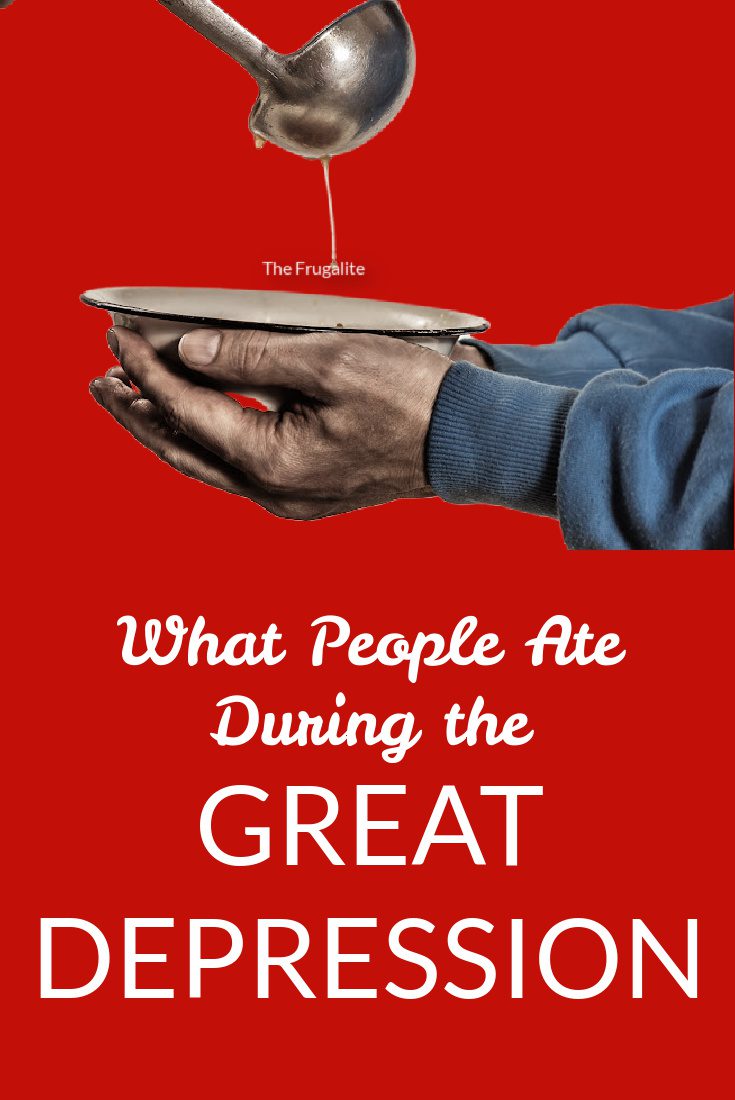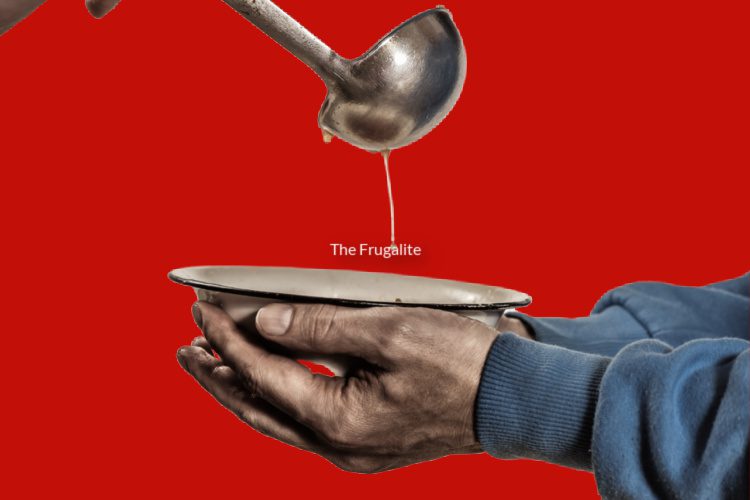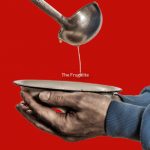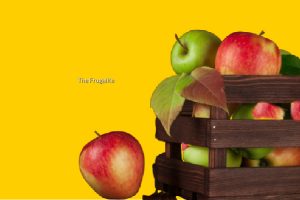(Psst: The FTC wants me to remind you that this website contains affiliate links. That means if you make a purchase from a link you click on, I might receive a small commission. This does not increase the price you’ll pay for that item nor does it decrease the awesomeness of the item. ~ Daisy)
by Joanna Miller
It’s no Great Depression yet, but food inflation is definitely here. I was annoyed, but not surprised, to see that my favorite brand of flour had gone up by a dollar for a 5lb bag. I can’t really complain. I was on the phone with a friend in Guam who told me his wife walked into the grocery store last month to find that the prices on everything had doubled overnight. That was disconcerting. It makes you wonder what people ate during the Great Depression, when times were even more difficult than they are now
Many people believe it’s just the beginning. We have seen the signs of rising commodities (wheat, corn, soy, cotton) prices in general and in more specific areas like rising cooking oil prices. Add the current global energy crisis (it takes a lot of energy to produce and transport food), and we could be looking at what may be a pretty ugly winter.
However, we shouldn’t despair. We need to be aware, but not panicky. People have lived through times like this before. If we are willing to embrace our inner Frugalite and change some habits, we can live through this too.
People got creative with what they ate during the Great Depression
The Depression in the United States and the wartime rationing in World War II brought out a lot of ingenuity in people. Whether living in the city or the country, people got creative and stretched out whatever foods happened to be available.
I had family in both the city of Chicago and various rural areas. The city relatives recall eating a lot of Spam because it was the most affordable meat-like product at the time. Hot dogs were also cheap and used in recipes like Hoover Stew. Corned beef hash was another food my Chicago relatives ate a lot of, again because corned beef was cheap meat, and adding lots of potatoes could make the dish go a long way.
Of course, meat was hard to come by, and many people simply went without it. Many people who couldn’t afford it substituted beans in its place. In fact, baked bean sandwiches were typical Depression food while meat was in short supply. Here are some other ideas on meals during dire times and a baked beans recipe you might enjoy.
Some of the things people ate during the Great Depression are things we shun now.
Canned meat wasn’t available for many people living in rural areas. However, they had still had access to meats most of us would now consider offal. One of my great-grandmothers absolutely loved pickled tongue. Head cheese was another nutritious food made with animal parts we don’t usually consider eating.
People in the country and city may have foraged, depending on what part of the country. One branch of the family in Chicago would pull dandelions out of the cracks of the sidewalk. They would put the greens in salads and collect the heads to make wine. Another branch of the family, living in western Pennsylvania, was utterly impoverished. They did not get electricity or running water until the 1960s. They were coal miners and did not get paid enough to afford much food. Still, they ate better than many city people because they had a garden and could keep chickens for eggs. They spent the Depression eating eggs and vegetables.
It’s the little things
Finding small things to enjoy becomes more important than ever when the economy stinks and life, in general, is rough.
One of my great uncles, who grew up in western Pennsylvania, loved buttermilk with pepper sprinkled on it. Buttermilk at the grocery store is carefully cultured and pasteurized. But if your neighbor has a cow and the milk sits too long and goes sour, well, that’s also buttermilk.
Some people during the Depression learned to love what many of us would think of as spoiled food.
What people ate during the Great Depression: Mock-Pie
Depression-era pies were where human creativity really shone. People would make pies out of anything and call it dessert. You can put Jello in a pie crust and have Jell-O pie. One of my elderly relatives still considers Jell-O with milk poured over it a real treat. Some other creative pie recipes using readily available ingredients during this time included:
- water pie
- vinegar pie (You can make this with any flavored vinegar. I imagine apple cider would probably taste the best.)
- bean pie
- raisin pie
- buttermilk pie
- mock pecan pie
- mock apple pie
William Woys Weaver’s Dutch Treats also has recipes for some interesting pies. For example, hardtack pie and pies made with unripe fruit. I originally bought that book out of curiosity about my own Pennsylvania Dutch heritage. I was surprised at the number of recipes featuring scrap ingredients such as bread crumbs and leftover mashed potatoes, the original ingredient in Whoopie pie filling. Casseroles can be king when stretching your food supply. Here’s an easy recipe formula for creating your own!
People could not afford to waste food or be picky
If you’re interested in doing some serious reading on more traditional foods, Sally Fallon’s Nourishing Traditions is a great start. Some of the recipes call for expensive ingredients, but there are also a lot of recipes for organ meats and broths, nutritious foods we can make using scrap meats and bones. Old cookbooks like the Fanny Farmer Cookbook may also spawn inspiration.
So, what can we learn from these older generations of cooks?
Well, first of all, they wasted nothing. I used to think I was thrifty until I read about housewives sweeping the breadcrumbs off their cutting boards to save for use in pies and cakes. They used cheap, easy-to-grow ingredients like beans and potatoes to stretch out whatever meat they had. We can look at recipes for things like Hobo Stew.
But the truth is, much of the food people ate was whatever was available. Meat scraps, bones, and vegetables went into the soup pot for one-pot meals. Any sweet or rich things went into a pie crust and counted as dessert.
You might want to re-evaluate
You may be thinking to yourself, “But I can’t just eat whatever is lying around. I’m gluten-free/paleo/keto/carnivore/vegan, whatever.” Perhaps you should reconsider. One option is to stockpile all your preferred foods. A better option would probably be to get healthier without relying on diets that involve esoteric ingredients.
The time to get healthy was yesterday. Now is the time to experiment and see what you can tolerate from locally produced and readily available foods. If the thought of eating canned meat and pies made out of Saltines doesn’t tickle your fancy, you need to think about producing your food. Because before long, you may not have a lot of other options.
People got sick and died from nutritional deficiencies a lot in those days. Although it wasn’t during the Depression, one of my great-grandmothers died in childbirth, in 1929, from toxemia, which correlates with protein deficiency. That branch of the family was not particularly poor. They just really loved sugar, and they didn’t pay as much attention to having a balanced diet back then. But that could easily happen to any pregnant woman unable to afford meat. The adult relatives who lived off eggs and veggies in the Appalachians were fine. However, the children all had rickets and were quite bowlegged.
Depression food is not depressing
I don’t say any of this to scare people or make them depressed. This article is to inform and impress upon readers that food shortages are serious. They have happened in the United States, and we need to be thinking about them.
Regardless of our finances, all of us can learn a lot about mental preparedness from our great-grandparents. They spent more than a decade eating whatever they could. They also used their creative abilities to make “Depression food” surprisingly tasty a lot of the time. Admittedly, most of them were probably healthier heading into the Depression. In 1930, 21.5% of the nation’s population was employed in agriculture.
People 90 years ago were far more used to working outdoors in all kinds of weather. Nearly everyone was raised on primarily organic, unprocessed food back then because most of the agrichemicals and food additives weren’t around yet.
Get used to going without and being uncomfortable
Contrast the lean, physically active American of 1930 with the average overweight, sedentary American of today. Consider pushing yourself a little bit now while you can still control your circumstances. If you have a sugar addiction, trying to break it can be a great start. Set your thermostat lower in the winter and higher in the summer (you’ll probably have to do that soon anyway, thanks to the skyrocketing energy prices). Get used to being a tad uncomfortable much of the time, and smile while you’re doing it.
The truth is, for the past 80 years, we’ve been living in an almost absurdly artificial world. No one other than the most decadent royalty of ages past had access to the variety of food and creature comforts we have. Now, I’m not too fond of all the circumstances that have forced us to lose these daily pleasantries. But whether we like it or not, most of us are probably about to lose a lot in terms of enjoyable extras. Not everyone living 100 (or 1000) years ago was miserable all the time. We need to learn how to not be miserable in reduced circumstances, too.
We CAN do this
If you need to be cheered up a little bit, I’d suggest trying one of the pie recipes listed above that people ate during the Great Depression. You may find out you enjoy some of these “poor man” dishes more than you think. I tried hard tack pie, which is pretty similar to the mock apple pie listed above, and it was surprisingly delicious. It was definitely not as sweet as what we would typically think of as a dessert. But it had a nice flavor and texture and went well with coffee.
There may be some hard times coming up. But our civilization isn’t the first to collapse, and it won’t be the last, either. When Rome collapsed, it wasn’t like everyone just magically disappeared. They just went on living, albeit in little scattered villages instead of a big, glittery city. Just because things get more challenging doesn’t mean they’re over. Our great-grandparents made some huge adjustments and survived to tell the tale. If they can do it, so can we.
When thinking about what people ate during the Great Depression, think about older family members.
Do (or did) any of your older family members have a penchant for eating something that seemed strange? If it’s an inexpensive item, it just might be a favorite comfort food that they ate during the Great Depression.
What are your favorite Depression food tips, and who taught them to you? Thinking about trying one of the recipes from above? Let us know how it turns out!












26 thoughts on “What People Ate During the Great Depression”
My nan made pickled tongue in jelly every Christmas well into her 80s . My mum and her sisters also always asked for her to make them one for their Christmas present. You couldn’t buy it anywhere and it actually became a yearly treat. The recipe passed with her as did so many others as she passed suddenly. My name was a tuff lady for sure and could stretch anything into a meal. I lived with her for a time. I came as a fussy eater left eating everything. To her last day the depression stayed with her. No matter the money on hand or the full stores . She always put some food away for a Rainy , I thought she was poor and shopping the specials to make ends meat. As I got older I understood a bit more. Wished I had got her to open up more about the depression.
This is a fascinating post, thank you. However this statement:
“A better option would probably be to get healthier without relying on diets that involve esoteric ingredients.”
Please don’t assume that there is a one-size-fits-all way of eating, even in frugal times.
For some people like me and many others I know, ending my gluten-free, sugar-free diet would spike inflammation in my body, causing many digestive issues. It would not make me healthier – quite the opposite. Some people cannot eat wheat and sugar. There’s nothing “esoteric” about eating rice instead of wheat, and forgoing sugar. It’s frustrating that so many frugal living blogs and preparedness blogs give outdated nutrition advice, without understanding that many people have unique nutrition needs.
Yes I am in the same boat ! I cannot eat gluten or sugar and most dairy- it would be the antithesis of bring hearty lean and strong minded /( I would be fat sluggish unwell cranky and in pain most of the time ) I wish a cure for the gluten shit would spring up before we have to be challenged by this! Praise God that I can eat home grown vegggies and eggs and meat !
I am one of those that cannot eat gluten and I’ve got one son who cannot as well. I’ve been looking at ways to store some things that are gluten free that will still enable us to enjoy some “bread” type things. Chebe bread (all starches) stores well and you can just add some oil, eggs and water and make small bites or a flat bread.
It’s sad that my childhood diet full of gluten, gmo food and sugar damaged my health. My poor parents and grandparents thought they were doing so good feeding me those things. They had enough money that we ate something from a fast food place at least one meal a day and they thought that made them rich. Everything else we ate was packaged – frozen biscuits and sausage, pourable eggs, white bread, lunch meat, canned ravioli, instant noodles, lots of store desserts. I have been trying for years to get healthy enough to add gluten back in but so far it hasn’t happened.
I wish I would have talked more with my dads older aunts and uncles. They were children during the depression and had a ton of knowledge.
I think it’s important to note that while many people truly do have issues with gluten or carbs or dairy (right here with the dairy), a lot of folks have jumped on the bandwagon of just eating special diets such as paleo, primal, keto, and low FODMAP. I’m certain that Joanna is referring to the latter type in her article.
Those who are doing it because keto is a cool trend would do well to broaden their options.
I’m sure if you could eat other foods and expand your diet, you’d love to do so. Eating food that literally makes you ill is always a terrible idea, however, so other options must be found. What are your less expensive substitutes? It sounds like the backbone of a really useful article.
Thanks for the article, I enjoyed it.
I’m really lucky that on both sides of my family, these sort of habits were mostly not lost. Despite having money, my parents mostly cooked from scratch and DIYed most jobs around the house. One thing I have kept going that people my generation find strange or even downright disgusting is a stock pot. My mum usually has a stock pot on the go:
In a large saucepan with a well fitting lid you put the bones/skin/gristle of whatever meat you have been eating (and fyi, meat on the bone is usually cheaper than prepared skinless, boneless cuts, here anyway), cover with water, add herbs and spices and simmer. Now here’s the really frugal part: you keep it going for a week or so, with no refrigeration! Every day you heat to boiling and simmer for a few minutes with the lid on then turn off the heat but afterwards DO NOT TAKE OF THE LID, EVEN ONCE. You can use the nutritious stock every day, topping up the water and adding any more scraps you like, then heating again. You can add vegetable scraps too (but no brassica!) But these will break down to mush after a couple of heatings so just do it at the end. If you have a Sunday roast every week it’s a great time to make up a fresh pot. Oh, and at the end, I pick out the long bones, add a little rice and some more water to cook up a treat meal for the dog!
And if you’re not sure what to use stock for, here are a few ideas: soup, casserole, stew, couscous, rice (it adds extra nutrients and a meaty flavour), sauce, gravy.
It’s worth mentioning that by running a search on YouTube for GREAT DEPRESSION COOKING, a great variety of videos will be listed on this topic.
In the great depression years before Rural Electrification, I had ancestors who hitched up horses to pull a wagon to haul a load of grain a few miles to a local grain mill to make cooking flour for them. I’m not aware of any of them who had grain mills in their home kitchens. Today such home mills (both hand-cranked and/or motorized) are readily available so that grains of all kinds and even dry beans can be turned into flour. Nuts can be be ground into nut butter (with lots more than just peanuts). With a home mill, you can eliminated the spoilage problem by grinding only as much as you need for a few recipes (or only one at a time during a power outage).
During that depression, cooking flour companies put various decorative patterns on their flour sacks … knowing that once the customer emptied their flour sacks they would reuse those flour sacks to make repairs and even to make clothes. I had one ancestor who used to joke that his mother made his (and his siblings’) underwear from Kelly’s Famous flour sacks.
Also in that pre-electric era, it was very common to have a wooden ice box to keep various foods cooler … before electric powered refrigerators were possible in rural America.
Another historical tidbit. Once Prohibition ended in late 1933 and alcohol became legal again to make and use, workers would again commonly bring a little alcohol burner with them to their remote job site to heat up coffee and lunch. Today there is a large variety of such portable camp stoves that can burn alcohol, wood pellets, solid fuel chunks, tree twigs, etc to do a wide variety of cooking. The point is that we can learn much by comparing how people prepared and preserved food in the depression years with what methods are readily possible today.
–Lewis
I was going to make the point about the difference between medically required diets and bandwagon diets, but Daisy beat me to it! This aspect to the subject really hit home with me because I’m about 85% through a weight loss journey. I’ve gotten rid of 100 pounds. While some of the low calorie foods I’ve used during that journey aren’t very frugal, simply eating less of everything is quite frugal. That’s something they did in the Depression – they generally ate smaller portions of even cheap foods. Portion control and calorie counting can help a person save money and gain health at the same time. It’s worth noting that large amounts of fat act like another organ in your body, causing all kinds of health conditions, so if you lose it you can also lose the need for quite a bit of medication and sometimes even eat a more varied diet.
My ancestors ate things like lard sandwiches in the Depression – using plain lard, or maybe lard and salt, as their sandwich. My grandfather loved pickled pigs’ feet. I’ve also heard of people taking a hot potato to school as a hand warmer, then using said potato as their lunch. It’s also amazing how far you can go on an apple, a lump of home baked bread, and a piece of cheese, once you are used to eating less.
Hit me up if you want me to write about frugal dieting, LOL!
for some people, the gluten problem may be something else. commercially grown wheat is harvested all at once, tho individual heads and the grains thereon may be less or more dry than ideal. to fix this, roundup is sprayed on the crop to dry it evenly. if you are not buying organic, you are swallowing roundup. that can’t be good for your gut. this applies to wheat, oats, other grains and even crops such as potatoes. also, in the last 50 or so years, wheat has been bred to be shorter, so that it is less inclined to lodge (fall over). you have heard the saying “you can’t change just one thing”? it may apply here. what else changed (an unintended consequence) to get that wheat to be so much shorter? did that change alter something else that affects some people with a “gluten intolerance”? maybe an heirloom grain would be acceptable to some of those people. it would mean trialing different varieties, and grinding the grain and making the food from scratch.
I have so read that a sourdough starter is much easier on gluten intolerant tummies. I shared this with my 2 friends who are self diagnosed gluten intolerant. They were not interested, too much effort was required to learn and maintain. Hum…
As a gluten intolerant person, I just want to say TINY amounts of wheat make me sick. I would never eat any wheat on purpose, not even fully organic heirloom perfect sourdough aged forever sprouted etc.
I just can’t do it. If I ever grow out of this allergy, I’ll never know it because I’m never going to eat it again (on purpose…. Tiny trace amounts end up in my food on accident all the time. It REALLY sucks.)
Not everyone has the same reaction or severity. But it’s very possible your friends just don’t want to feel sick and aren’t willing to experiment with their health like that.
Both sets of my grandparents raised families during the depression. Neither family had electricity, or indoor plumbing, until after WW2. My maternal grandmother lived to be 93 so I had the opportunity to spend time with her as an adult and we talked quite a bit about how things used to be. One of her brothers rode the rails and ended up in AZ where he was able to find work and eventually became quite prosperous. There wasn’t any wild game or fish to be found in central MN (where they farmed) because it had all been hunted. Her family had food because she had a huge garden and my grandpa grew sweet corn, potatoes and strawberries separately in a field. They made dresses for girls and pajamas and shirts for boys out of feed sacks. I still have some of the feed sacks she gave me. She would go to the feed store with grandpa and pick out the sacks she liked best. When the clothing wore out, quilts were made from the good bits. The quilts were filled with wool from their own sheep. Nothing, absolutely nothing, was wasted. She never had little bits of food go moldy in her refrigerator. There was always a plan to use every bit of leftover food. From bread crumbs, to the rare orange peel. You cooked what you had, ate what you cooked, and were grateful for it. They purchased flour, sugar, oil, baking powder and soda, coal to heat with, small amounts of animal feed, and very little else. I don’t think my grandmother missed it as she got older and times got easier. She said more than once, “People who talk about the good old days never had to use an outhouse in a Minnesota winter.”
Rural America got electricity courtesy of the American taxpayers.
The truth is, for the past 80 years, we’ve been living in an almost absurdly artificial world – I think 80 years is a bit inaccurate. I’d say the last 40 years – when greed reared its ugly head.
My grandfathers both grew up on farms, never considered themselves poor as everyone else around them lived the same life. Plenty of food to go around. Paternal grandmother lived in a city (not large) – she took care of her younger siblings as her mom had died. She didn’t waste food as her father would beat her (all of them experienced beatings for one thing or another). Maternal grandmother also lost her mother at a young age and the mines didn’t pay well. Food was scarce and once an adult, would feed everyone else first, herself last.
Paternal grandfather remembered shooting pigeons and selling them in Chicago. All remember eating squirrels and rabbits. All ate simple home cooked meals which has carried on thru the next generations.
Excellent article! A lot of the foods mentioned seemed like “normal” things to eat when I was growing up. Although, at only 55, my parents ate many Depression Era foods. My mum, she loved pickled pigs feet. I remember just staring at her wondering why, or how, she could eat the feet? Hooves? She said that her mum, my grandma, would can up their own when they butchered, as they were farmers. Mum also ate “head cheese”? Or was it “souse”? It indeed had all sorts of funny, yucky-looking “stuff” all nicely mixed in clear GELATIN!! It smelled of vinegar. No can do on this end! My father, born in 1938, still eats a bowl of crumbled up saltines with milk. No sugar, either. He does this with bread as well. I recall asking him why he ate that stuff when there was plenty of other things to eat. His reply was, “coz it’s what I like and grew up on”. Alrighty then.
We always had a huge garden. When we lived “in town”, my father still managed to put in a garden. When we moved out to the country to “Amish territory”, as my sister’s and I referred to our new home, the gardens just got bigger! Mum would can and put up many different items from one or more of the four garden plots. Linsey Spread. Mum had said she grew up on it. Hhhmm. What could THIS be? It was ground up green peppers, onions, throw in a red pepper, maybe a cuke, and mix with a mayo-like mixture. After the ground up veggies sat to drain a bit, it was then mixed with the mayo-like stuff. Put in jars and canned. It was excellent as a sandwich, alone. Better yet was a topping for a fried baloney sandwich!!! We would get minutes old milk and eggs from the Amish we friended. Mum let the fresh warm milk sit on the counter till room temperature then refrigerate. We all knew that cream on top was tomorrow nights whipped topping for some fresh, baked-from-scratch goodies! I could go one about all the different foods my grandparents, parents and now, myself, eat that the “average” person would not touch.
Thank you, Daisy, for this article. It envokes something nostalgic in all of us and now that we’ve got a few years under our belts, we can appreciate, and hopefully incorporate, so many of these memory awakenings for some good ole SOUL food!!
Have to agree this article stirred up a lot of fond memories from the family.
Mom taught me to make cottagecheese, butter, buttermilk, clotted cream, ect.
Dad taught me how to used the old tools he still had.
Grandma taught me about waterless to preserve eggs, smoking and salting meats, making charcoal, ect.
I still like bead crumbled up in milk.
My parents and grandparents were all adults during the Great depression. Dad was with his dad, younger brother and sister, and stepmom. The men worked construction whenever they could find work. Stepmother kept the house. Kids helped with the garden. They were in Tolido, Ohio.
Mom, grandma, and moms sisters older son were together in Florida. Mom was working in a Mom and Pop neighborhood grocery store. The owners shared dented cans, broken bar soaps ect with Mom. Grandma took care of her grandson, gardened, and did a lot of the canning. Each did what they could to survive.
Each family was blessed actually owning their own home. No bank to foreclose. Both homes had wood Cookstown and fireplaces. Both were in towns but with room enough for a garden and chickens. Both families had been farm families so were experienced with growing food, canning, making vinegar, dandelion wine and medicine was a pint of liquor with hard candy of some kind in it. Moms Mom used rock candy. Dads family used hard mints. Dads fam I ly made hotbed with used windows. Moms mother made hot bed with a glassdoor set on bricks.
The cooking was all from scratch. Dads family grew many hills of potatoes that took up over half of their backyard. Moms Mom grew potatoes, corn and grains in flower beds for their starches. She had her grandmothers hand cranked grainmill, meat grinders with multiple blades. Corn was cracked for the chickens and the big pen had areas of greens growing year around. Grandma ground and regrouned grains for cooking and baking needs. She ground their coffee or roasted chicory roots to mix with coffee. Dads family roasted dandelion roots for a hot coffee substitute. Both families foraged for nuts and greens to extend the garden produce. Moms Mom traded for a chinqapin bush to add some nuts to the diet.
Moms Mom me surrel frickasee. She’d trade a few eggs to a neighbor boy for squirrels he’d kill. Fry seasoned like a good fried chicken. Make a milk gravy to cover and simmer till falling off the bone. Mmmm good. Nearby farmers would bring cans of milk into the little communities to trade for things they needed. Moms Mom traded sewing or quilting for milk. Mom made egg noodles. That was a frequent part of meals. She’d make enough for a few days at a time. Grandma cooked the meals then add the pasta. Often it was a vegetable, a sauce or gravy, and noodles. Creative deserts or simple cakes to eat hot with a bit of butter and milk poured over or topped with cut up fresh fruit. Dads family seldom had any sort of desert.
Each did what they knew and hard work was the order of the day.
My parents met during WWII and married when the war ended. The rationing of the war years was lean but almost rich compared to the Great Depression. I was born after the war. Dad was in college on the Verterains educational plan. Mom and I foraged for edibles. Mom canned the produce from the garden they both worked on. She split greenbeans almost the length of them so they could hang on the clothes line to dry. She’d been born in PA. They called them Dutchmens breeches. Boiled with some diced onions they taste almost meaty. I still like them. I make prickly pear cactus wine most years. I use it medicinally. A frikasee is still a good way to make a tough meat tender or extend a little meat into a hearty meal.
Moms family had lived on the farm in PA until 1920. Her dad raised apples and shipped them across New England. He butchered 2 pigs and 2 calves each fall. Some was dried, some salted down, and some cold smoked to preserve it for the year. Gramnma made sure I knew many of those skills since the boy cousins weren’t interested. I was fascinated with how they had done things. They married and moved to their farm in 1897 when grandma was 21. I still have her grandmothers cast-iron griddle, meat grinders ect. Even her family turned rolling pin that was well used when it was passed on to grandma when they married. A family book printed in the 1700s told how to do many farm chores, make barrels of vinegar to sell, med treatments for man and beast and a good assortment of recipes for cooking. My dresser was made in the family furniture factory for a great grandmothers 8th birthday present. It was passed to Mom for her 8th birthday and passed to me on my 8th birthday. Typical of families – usable things were saved and passed on and on. Even a grandfathers homemade key hole saw has a deer antler handle and still works great. My other gra b dfathers hand planes are still used when I’m woodworking. Big and little each kind was for a different job. His brace and a bit adorn my shop wall. It isn’t just food that wasn’t available in hard times. Cookware and tools were invaluable as well.
My grandparents and parents lived during the Depression. Each family had a different experience. One grandpa was a train engineer and they were considered well off. They still had a big garden and shared with those in their small town. Grandpa, till the day he died, had a breakfast of crumbled saltines in a cup of coffee – no sugar or milk. The saltines were first home made, then store bought. Other set of grandparents worked odd jobs but had a huge, maybe an acre, garden and that’s what they ate. I was raised on ‘made from scratch’ with lots of soups, what I still consider odd meals of sauerkraut baked with onions and one sausage link per person. We’d top that with ketchup – homemade. Also beans over cornbread, homemade noodles cooked in chicken broth with maybe a cup of shredded chicken and lots of celery, carrots and onions. Mom made her own grape jelly from grapes given to her from Dad’s co-worker – they wouldn’t eat them.
When I married we moved to Tennessee, my husband’s duty station, and it was my first encounter with beef tongue. Wasn’t thrilled with it, but it was affordable. So was flank steak – the cheapest beef cut. I had the butcher cut a pocket in it, stuffed it with stale bread, onions, celery, covered it in tomato sauce and baked for about an hour or so. Butcher was dumbfounded that a 21 yr old Yankee would know how to do that. Amazing the difference between city and country raised.
Lots of things my grandparents and parents did that I still do, I’m 75 and have passed it on to my kids and grandkids: save all bread, cracker, cereal crumbs to use as casserole toppings or breading. Cut out any bruised areas of fruit or veggie and use the rest (my DIL used to chuck the whole thing). Add hot water to the bits left in a jelly jar and add to any pancake or muffin batter. Save all the drippings from any kind of meat/poultry but in separate containers. Use for gravy base, soup base, add to casserole, cook noodles in it, etc. I save and dry celery leaves, carrot tops, parsley stems and use as seasonings. I also harvest unsprayed puslane, marigold flowers, sweet potato leaves, male squash blossoms and add to salads. Neighbors at first were sort of horrified, now they do the same.
Food waste is so prevalent and prices increasing so rapidly that we really need to go back to some of the more common ways to save. I’m not saying baked bean sandwiches, altho baked beans with some raw veggies is a good meal, but using it all up.
The old saying “Use it up, Make it do, Or do without” always comes to mind and maybe should be put into use
Thrifty sources of protein became popular back in the day, hence jell-o molds with all sorts of stuff in them. jell-o was invented near where I grew up in NY, so I kind of have a little interest in it (not much, because i will not eat for example jello with shredded carrots in it, texture… just no.). There were entire cookbooks for aspics and gelatin dishes to save money and still get your protein in. I used to look for old cookbooks at antique sales and many were given away with the product so people could learn to use it. Or you sent in a nickel and they mailed you a cookbook.
Both my parents lived through the Depression. Fried bologna in sandwiches was a favorite of ours and still is. One thing my Dad always made for me was sugar toast. It sounds horrible, but tastes great, and probably isn’t real healthy, but it’s great for a treat. Make toast, pour coffee over it (just enough to dampen the toast), and cover it in sugar. Yum! I ate a lot of that as a kid.
Fried bologna must be served with cheap yellow mustard on white bread and cut into those little diamond shapes with slits so the edges get brown. ?
Mayo on the fried bologna for me. Also like Spam but even that isn’t inexpensive any more.
My dad grew up during the Great Depression (he added me to the family late in life). He used to love cornbread crumbled up in a glass of cold buttermilk for dinner if it was a ‘fend for yourself’ night. He was also a big fan of a heaping ladle full of pinto beans and broth served over a hunk of fresh cornbread.
When I was a girl, and also when he took care of my girls, on the occasional night he was responsible for “making dinner,” he would make a Coke float in a giant glass. He’d split a bottle of Coke between us, scoop in some ice cream, and say, “Don’t tell your mother.” Of course, I knew, and so did my mom, because that was my dad’s version of “making dinner for the kids.” That was one of the best treats his family could afford on occasion when he was a boy and I love that he kept that tradition going. I still love a Coke float to this day.
the discussion in the comment section is profound and on point. It was a pleasure to read. What a great community.
Thank you! Welcome to The Frugalite!
My grandparents also survived both the Depression and WWII rationing. Since my family was super-fractured I didn’t know them well, but I remember this: they threw away Nothing. While I can see keeping buttons and viable bits of string, I never understood why they kept old bowling score sheets and receipts from their grocery store long gone, But that’s what they did, and they survived very hard times. I suppose a neurotic mindset is a proper adaptation to neurotic times!
That being said, I think the key word here is Adaptation. If that means learning to cook from scratch because those crap convenience foods are no longer easily available, then that’s what we must do. Use it up, wear it out, make it do, or do without should become a mantra, if it isn’t already. We must adjust our thinking, so the rest will follow.
This from a woman who barely got a C in sewing class and was in Home Ec only because the teachers wouldn’t let her take Shop! But I did get a C and I still learned how to wield basic hand tools too! ? So I can fix a sink that isn’t draining and sew on a button but don’t expect a ball gown!
My mother grew up during the Depression and WWII. To this day, she still eats liver. She grew up in the Bronx, New York, not too badly off. Because of the urban setting they couldn’t grow much, but they did have chickens on the roof of the apartment building.
My father was in nearby Brooklyn. He had five brothers and sisters and lived in a small brownstone. They had a back yard and used every square inch of it as a victory garden, even before the war.
My step-Dad is a Brit. Grew up during the Depression and the war over in the UK. They grew fruits and vegetables in an allotment (a kind of community garden). One of his neighbors also raised rabbits.
They all made do with what they had.